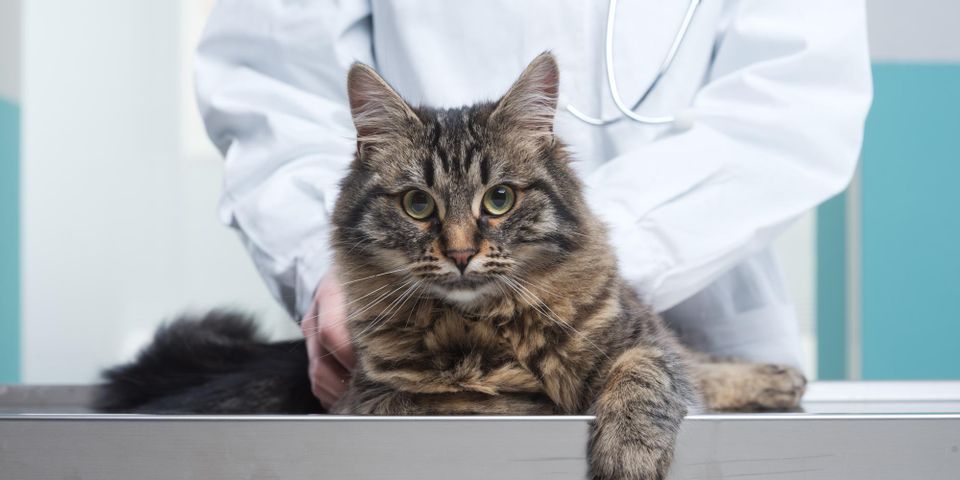
Does your cat itch frequently or groom constantly, creating hot spots or causing hair loss? While a certain amount of scratching or grooming is normal, excessive behavior may indicate a skin condition or a pet allergy. Cats are prone to skin issues; here is a list of the most common and how to treat them.
5 Common Feline Skin Conditions
1. Parasites
Fleas and ear mites are common in cats and cause itching, irritation, head shaking, and excessive grooming. Left untreated, cats with parasites will develop bacterial infections. Ear mites cause excessive ear wax and can usually be seen with the naked eye as black residue inside the ear. Ear drops prescribed by a vet are the most common treatment. Fleas can be prevented by medication and topical grooming treatments such as flea powder and combing.
2. Contact Dermatitis
 A rash of itchy red bumps is a sign that your cat may have a pet allergy to chemicals. This can be laundry detergent used to wash bedding, carpet cleaning agents, or fragrance in cat litter. Try to keep the cat away from areas where you use chemicals, wash their items with unscented, natural detergents, and feed them out of glass or stainless steel bowls.
A rash of itchy red bumps is a sign that your cat may have a pet allergy to chemicals. This can be laundry detergent used to wash bedding, carpet cleaning agents, or fragrance in cat litter. Try to keep the cat away from areas where you use chemicals, wash their items with unscented, natural detergents, and feed them out of glass or stainless steel bowls.
3. Abscess
An abscess is a painful, pus-filled swelling that occurs at the site of a puncture wound. You may notice a firm bump somewhere on the cat’s body that over time will rupture. Abscesses are common in outdoor cats and are usually the result of a fight with another cat. A trip to the vet is necessary to combat infection. A cone may be needed to keep the cat from over grooming the area as it heals.
4. Food Allergy
Food allergies are one of the most common culprits of skin issues, and it can cause swelling in the face, neck, eyes, and throat. An elimination diet is the best way to identify pet allergies, but if the cat is experiencing swelling or extreme irritation, your vet may recommend a steroid injection.
5. Ringworm
Ringworm is a fungal infection that is contagious to animals and humans. Symptoms include round patches with a red ring and hair loss in the center of the ring. Some cats may not have the “ring,” but if they exhibit broken hair around their ears and face, it’s likely ringworm. Ringworm requires prescription anti-fungal drugs and sterilization and cleaning of your home.
Veterinary Dermatology Services, serving Ohio, Northern Kentucky, and Southern Indiana, specializes in pet allergies, endocrine and autoimmune disorders, and infectious skin diseases. Dr. Breen offers comprehensive allergy testing and consults with primary care veterinarians on animal dermatology. Call (513) 489-4644 to make an appointment or visit the website to discover more about Dr. Breen’s services.
About the Business
Have a question? Ask the experts!
Send your question

